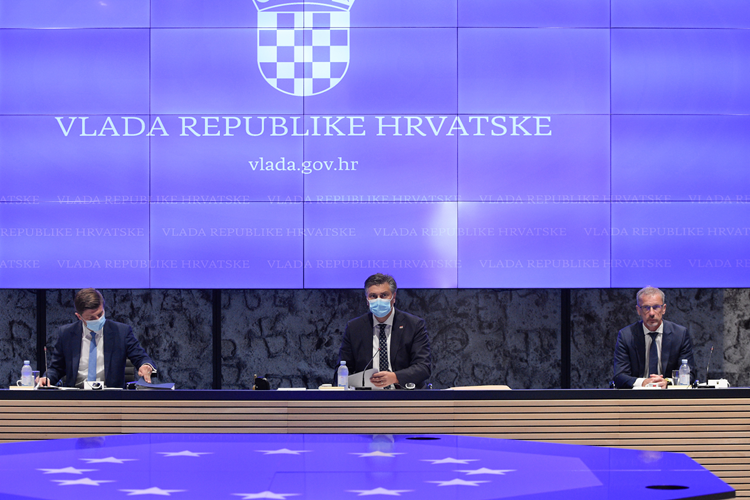- Published: 28.07.2021.
Croatia meeting its ERM II commitments as planned
Finance Minister Zdravko Marić said on Wednesday that Croatia was meeting its commitments under the European Exchange Rate Mechanism (ERM II) according to plan, adding that this week the government would adopt guidelines on budget limits for the next three years.
"We are not running late. Quite the contrary, we are a bit faster," Marić told the press after a meeting of the national council for the adoption of the euro as legal tender in Croatia, stressing that it was very important for Croatia to meet the convergence criteria.
By entering ERM II, Croatia is required to meet the Maastricht criteria of nominal convergence and implement reforms envisaged by the action plan. The Maastricht criteria include exchange rate stability, price stability, interest rate stability and two important public finance indicators - budget defict and public debt. The action plan includes eight measures covering four areas - preventing money laundering, strengthening the business environment, strengthening public sector governance and strengthening the justice system.
Marić said that at its meeting this week, the government was expected to adopt budget limits for the next three years, in line with its convergence programme. He recalled that the programme had been favourably assessed by the European Commission.
"We will be in full compliance with the criteria and will meet everything that is expected of us, not just for the sake of adopting the euro but also because we have learned as a country that it is very important to have sustainable public finance," he said.
With this year's budget, the public debt to GDP ratio is returning to a downward trajectory and this trend should continue in the next three-year period, the minister said.
The convergence programme is a regular document adopted in dialogue with EU institutions as part of the European Semester. In April, the government adopted its eighth convergence programme, for the 2022-2024 period, projecting a growth rate of 5.2% in 2021, of 6.6% in 2022 and of 4.1% in 2023.
The general government deficit target for this year is 3.8%, while the deficit for 2022 is projected within the Maastricht criteria at 2.6% of GDP. It is forecast at 1.9% of GDP in 2023 and 1.5% in 2024. At the same time, public debt is expected to fall - from 86.6% of GDP in 2021 to 82.5% in 2022, to 79.5% in 2023 and to 76.8% of GDP in 2024.
Graphic solutions to be forwarded to EC by mid October
At the start of the meeting, Prime Minister Andrej Plenković underlined the importance of keeping the public informed of all steps being taken in the process of introducing the euro in Croatia in 2023.
The PM recalled that the Croatian coat of arms, a geographical map of Croatia, the marten (after which the Croatian currency is called), the Glagolitic script and Nikola Tesla were the motifs selected for the Croatian side of euro coins.
The checkerboard coat of arms will be used as a background on all coins, and other motifs will be used on coins of different denominations, with the 2 euro coin featuring a geographical map of Croatia, the 1 euro coin featuring the marten, the 50, 20 and 10 cents coins featuring Nikola Tesla, and 1, 2 and 5 cents coins featuring the Glagolitic script, the prime minister said.
Plenković thanked everyone who had taken part in and contributed to the selection process, adding that the graphic solutions would be forwarded to the European Commission and the EU Council in mid October.
Vujčić: Tender for designing euro coins on Aug 2
Croatian National Bank Governor Boris Vujčić said that on August 2 the central bank would announce a public tender for graphic solutions, namely a coin design. After selecting the best designs, it would send them to the European Commission for approval.
A reward for best designs is HRK 500,000 (€66,600).
Tekst: Hina
